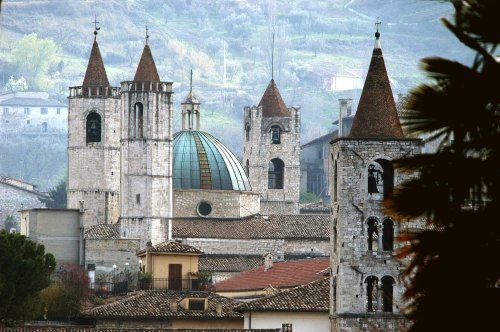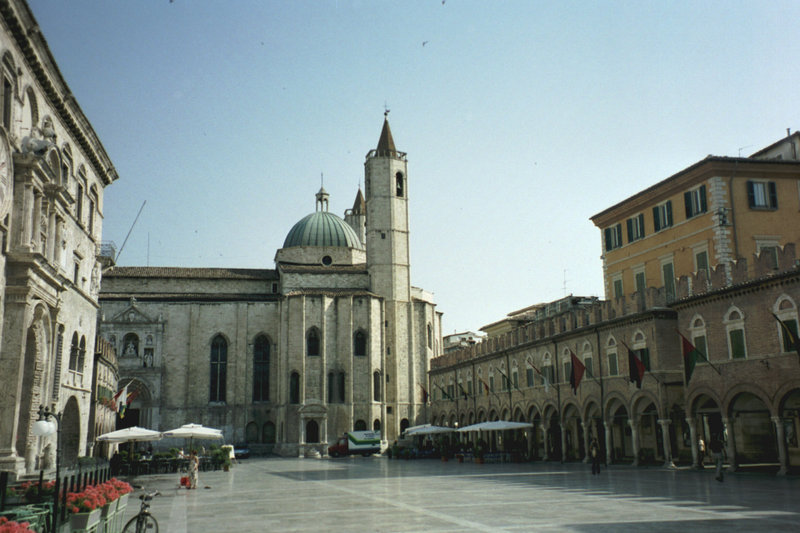Ascoli Piceno
- Ascoli Piceno 63100
- Ascoli Piceno Stuffed Olives
- Ascoli Piceno Le Marche
- Ascoli Piceno To Rome
- Ascoli Piceno Le Marche
The town of Ascoli Piceno is a place you can see in only one day, but remember for a lifetime. Along with its breathtaking main square, it has other outstanding sights that manage to leave their mark on even the most blase' of tourists.
With a continuous history dating from the Sabine tribe in the 9th century BC, Ascoli Piceno is one of Le Marche’s most refined and attractive towns. Its historic centre, mercifully flat after so many steeply stacked hillside towns, is a charming pocket of medieval streets punctuated by grand churches and photogenic piazzas. Ascoli Piceno Italian: ˈaskoli piˈtʃɛːno ; Latin: Asculum) is a town and comune in the Marche region of Italy, capital of the province of the same name.Its population is around 48,278 but the urban area of the city has more than 93,000. Nov 19, 2019 Ascoli Piceno is easily navigated on foot, as all the town’s major sightseeing attractions are located in the fortified historical town center. Visitors can enjoy a casual stroll through this picturesque area without having to worry much about traffic, as most streets in the area are too narrow to allow cars.
Ascoli Piceno 63100
Start at the Piazza del Popolo, a traffic-free, travertine-paved main square that is one of the most beautiful squares in Italy. To one side of the square stands the Palazzo del Popolo, a splendid 13th-century building guarded over by a monumental statue of Pope Paul III. Look inside to see the arcaded Renaissance courtyard. Closing off one end of the piazza is the great Gothic church of San Francesco, a sober but pleasing building both inside and out.
And next to the Piazza, make an unforgettable stop at the Caffe' Meletti to taste the celebrated anisetta liquor.
The other main square, Piazza Arringo, is flanked by the Duomo, and the town hall, or Palazzo Comunale. Inside here you will find the Pinacoteca Civica, Ascoli's art gallery.
On the northern side of town, one of two Franciscan cloisters becomes the town's busy, colorful market in the mornings. The street in front of San Francesco is the center of activity in Ascoli, the Via del Trivio. Follow it north to Ascoli's oldest and prettiest neighborhoods, on the cliffs above the Tronto valley. It's also here on the northern side that you'll find most of the city's surviving towers.

On the western entrance to town, on Corso Mazzini, you will see a small Roman gate, the Porta Gemina, dating back to the first century AD. On the fringes of the city, other Roman remains are everywhere. Just south of the Porta Gemina, on Via Angelini, there are traces of the Roman Theater.
From here, Via Ricci leads up to the Parco della Rimembranza, with two medieval churches of the Annunziata and Sant'Angelo Magno. Finally, there's San Gregorio Magno, built over a Roman temple of Vesta, just behind Ascoli's town hall in Piazza Arringo.
Ascoli Piceno, a town of just fewer than 5,000 people, lies at the confluence of the Tronto and Castellano rivers in the Le Marche region. Called the 'City of Travertine' for the milk and honey piazze and facades, Ascoli's historic center is an architectural gem. Once home to over 200 spindly towers, almost 50 remain. The public squares clatter with activity, especially in the evenings, as folks settle in for a glass of wine, always with little offerings of food, or an Anisetta from the famous Anisetta Meletti, a place that's been pouring since 1870.
If you wish to embrace the spirit of Ascoli Piceno, you might take your lodging, as we did, at the Antico Borgo Piceno, just outside the walls of the center. After what could come to be the best breakfast you've ever had in Italy, you can exit and turn right, walk past the antique public wash basins called Lavatoio di Porta Cappuccina and bear right on the Roman bridge that leads you through the city gate. At night, the view of the city from the hotel, especially during a full moon, is quite evocative.
The facilities at the hotel are top notch. We had an apartment, and chose on some warm evenings to sit on the patio and eat some of the wonderful preserved meats, vegetables, cheese and bread of Le Marche while looking at the ancient city that rose up before us.
As you wander Ascoli Piceno, you'll wonder why they don't make all cities like this. The public squares, piazze, are made for relaxing, people-watching, having a drink, or just sitting back while lost in a blistful thankfulness that your taxes are at work making something beautiful and useful for all.
Let's list the two main piazze, followed by pictures
- Piazza Del Popolo: Central, Sacred and Profane architecture, bars, restaurants, Anisetta Meletti.
- Piazza Arringo: South side of the historic center, Sant'Emidio Church, Archaeological Museum, a stand which offers the famous Olive Ascolane. Also the start of the little tourist train.
Piazza Del Popolo
Piazza Del Popolo: Palazzo dei Capitani del Popolo
Piazza Arringo
Map: Ascoli Piceno
Recommended Restaurants

Ascoli is inexpensive, especially if you're used to the high prices of the tourist cities.
Piccolo Teatro, Via Carlo Goldoni 2, was the perfect introduction to the traditional food of Ascoli. Marked on the map, the restaurant is a single, smallish room (make reservations in the summer) run by Chef Luca and his wife Diletta. You can reserve on the web site, or by calling 0736 261574.
We had a great lunch at Sensi on Corso Vittorio Emanuele 2. It's also a wine and cocktail bar with seating in an inner coutryard. They serve a great fritto Ascolano which includes fried crema, the stuff that comes inside your morning brioce.
Snacking? Well, you can. Grab a bag of the meat-stuffed, giant, deep-fried olives called olive Asoloane at Migliori Olive Ascolane at the west corner of Piazza Arringo. Just down the street is Primitivo, which offers their own production of honey, olive oil, local wine, candy like you've never had before, chocolate, tea, and other staples of modern life.
Weather and Climate
The climate of Ascoli Piceno is warm and temperate with significant rain, which falls heaviest in September through December. Optimal temperatures occur in May, June, September and October.
Rail Access
You can get to Ascoli Piceno by train. It is the last station on the San Benedetto del Tronto--Ascoli Piceno line, which links to the Adriatic line.
Ascoli Piceno Stuffed Olives
Where to Stay
Ascoli Piceno Le Marche
If you can't get into our recommended hotel above, there are quite a few reasonably priced hotels in Ascoli Piceno. Here are three we recommend for value, visitor ratings and top locations.
Ascoli Piceno To Rome
Video
Ascoli Piceno Le Marche
Our video shows you the path of the little tourist train through Ascoli Piceno.